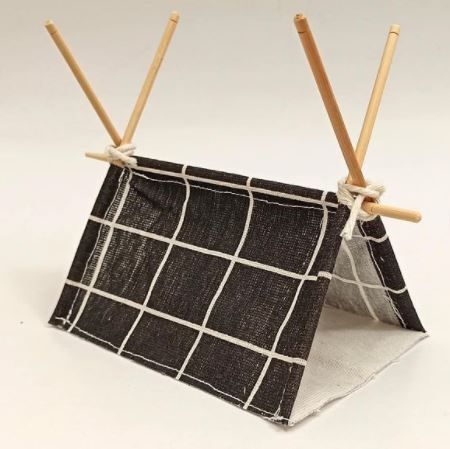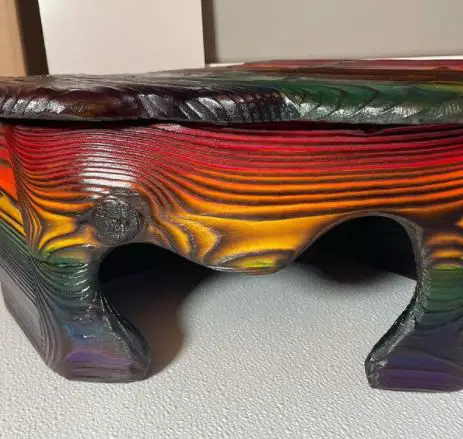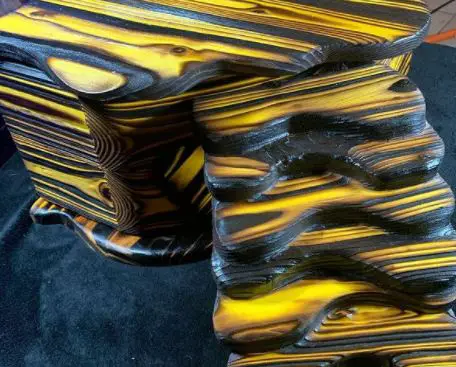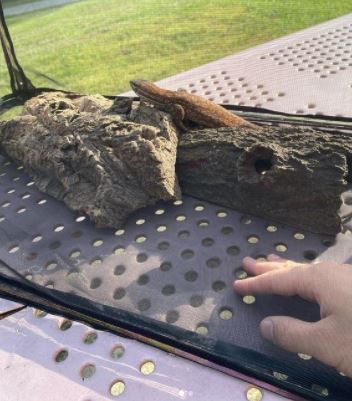How to make DIY reptile hides?
Reptiles are a type of animal that needs a lot of care and attention. They need to be fed, cleaned, and have their enclosures maintained every week or so depending on the size of the reptile.
One thing that can help your pet feel at home is providing them with a hideout from which they can observe you without being seen by humans or other animals.
In this blog post, we’ll show you how to make DIY reptile hides!
Related Posts:
- Best Thermometers for Bearded Dragon
- How to Read a High-Range Reptile Thermometer?
- How to Keep Humidity in a Reptile Tank?
- How to Clean Reptile Substrate?
- How to Clean a Reptile Water Bowl?
How to Make DIY Reptile Hides?
Materials:
- A container
- About 2 cups of dry organic potting soil
- A spray bottle of water (optional)
- Natural-colored hand towels (optional)
I used one towel. If you use two, they should be the same size so they can be switched out more easily.
Instructions:
How to make DIY reptile hides? Here are the instructions!
- Pour your dry organic potting soil into the container. After this step, it is optional to add something for extra humidity. I used sphagnum moss (dry), so you can add a few handfuls, or 1/2 cup if desired. If you do choose to add it, make sure it is moist and not saturated.
- Take your towels and place them on top of your soil mix. The towel will help hold in humidity but is not necessary if you are willing to spray the hides every day with water. I use one towel for two hides.
- The next step can be done at any time after the first step if you happen to have a spare container lying around or can find one cheap. You will want to put your towels in the old container, and then pour your soil mix on top of them. The reason I do this is that it allows me to reuse my soil and hide set up as long as possible. Then I can simply clean the old container and reuse it with a fresh towel set up.
- After you have finished, take a large drill bit or a soldering iron and poke some holes in the top of your container for ventilation. This is also when you will want to dig out any drainage that comes through the bottom of your container if there is some.
- Make sure you clean out all of the dirt and make it as level as possible, then cover it with a towel, and you are done!

I can fit about 8 small hides or 4 large ones in this container.
If you want to use more than one hide per enclosure for humidity purposes, just stack them on top of each other. For example, I can fit about 12 small hides on top of each other vertically in this container.
Warning: If you are wanting to make a large or wide cave out of this setup, it is best not to use potting soil because the weight will be too heavy for the container. Use sand instead.
How to Make a Reptile Hideout From Styrofoam?
Now that you know how to make DIY reptile hides, can you make a reptile hideout from styrofoam?
There are different types of styrofoam you can use, but I would recommend an egg crate because it has small holes that provide nice places for the animals to hide.
The material is also not very dense so plants will be able to grow through it.
When you plan on using plants with this type of hiding place, make sure there is some sort of drainage system underneath the styrofoam. Otherwise, it may become waterlogged.
How to Assemble the DIY Reptile Hideout?
You can use hot glue to attach some pieces together for a stronger hold. I would also recommend covering the surface with some natural-looking moss or something similar so that it looks nice and hides any remaining seams.
You can also use some natural-looking rocks or branches to decorate the inside of your hideout.
If you are using moss on the walls of the hideout, it is best to put a thin layer on top that will be visible, then cover most of it with sand. This way, if anyone accidentally knocks into the wall while digging around, they do not get a mouth full of dirt.
How Do I Put the Reptile Hideout in the Terrarium?
I would recommend using some sort of heavy object to weigh it down so that it doesn’t get knocked over while you are working with your reptiles or while they are exploring.
You can also use a bit of hot glue on some of the edges to attach it to the bottom of the tank, which will also help with stability.
Can You Use Cardboard as a Reptile Hide?
You can use your imagination to make a snake hide or buy one. The cardboard does not work because it is too dirty and has to be replaced often.

What Is the Difference Between Wood Reptile Hides and Reptile Furniture?
Wood Hide
A place where the owner can place his/her dragon and they can chew on it. Most of them are made from real wood, but some owners use fake wood.
They often resemble a hollow log or stump and can be spray painted to resemble bark. Reptile hides should be cleaned every week with a paper towel and hot water.
Reptile Furniture
Reptiles can get bored of their enclosures, which is where reptile furniture comes into play.
These are usually specific for reptiles with most being made of plastic or plexiglass so they won’t chew the furniture to pieces.
Some owners will use real wood, but they must be sure that it’s been properly treated to prevent their dragon from being poisoned.

How to Decorate a Reptile Terrarium?
Decorating a terrarium is necessary as it makes the reptile feel more comfortable.
It also enhances the viewing pleasure of an observer.
In this article, we will not only tell you how to decorate a terrarium but also why certain things should be kept in mind while decorating a terrarium for your beloved pet/s.
A terrarium is typically an enclosure that houses the reptile. If you are keeping more than one reptile in a single terrarium, then their terrariums should be separate.
Remember that reptiles can be territorial and will fight each other if placed together before they know each other well enough or reach sexual maturity (if kept as breeding pairs).

What to Consider When Decorating a Reptile Terrarium?
Ensure that there is always an escape route for the reptiles.
It could be either an opening in between two rocks or something similar that enables them to easily come out in case they feel trapped or uncomfortable.
Remember, if they are not able to come out in case they get panicked, they will die of either suffocation or stress.
Also, the entry and exit points must be easily accessible by the reptiles.
For instance, if there is a rock over the opening, which makes it difficult for them to come out, then they may end up hurting themselves trying to escape. This will only make them more stressed.
1. Entry and Exit Points Must Be Easily Accessible
For instance, if there is a rock over the opening, which makes it difficult for them to come out, then they may end up hurting themselves trying to escape.
This will only make them more stressed.
Ensure that your pet always has something solid to hold on to and rest.
If there is not enough depth of soil or substrate, they might find it difficult to dig around and change the position.
2. Enclosure Should Be Well-heated-up
The enclosure should be well-heated-up to provide your pet with a comfortable living condition.
Different species of reptiles require different types of lighting conditions to survive and maintain their health. If you are setting up the terrarium for the first time, ensure that you set up things accordingly.
3. Make Sure There Are No Sharp Edges in the Enclosure
Also, do not place any objects that pose a threat to your pet like electrical appliances, etc.
The terrarium should have dirt or soil at the bottom. This is because reptiles tend to dig around in search of food and the substrate provides them with the necessary support while they are doing so.
4. Terrarium Should Have Dirt or Soil at the Bottom
This is because reptiles tend to dig around in search of food and the substrate provides them with the necessary support while they are doing so.
5. There Must Be a Water Dish
It is important that you provide your pet with fresh water on a daily basis. If they do not drink water for at least 6 hours, it will result in dehydration, which may prove fatal.
Conclusion
How to make DIY reptile hides?
The steps to make DIY reptile hides are simple and easy. You can also use other materials, such as egg cartons or shoe boxes, for the same purpose.
I hope this post has been helpful in showing you how easy it is to create your own hides for reptiles like bearded dragons. Now that you’ve seen all of these different options, try making one yourself!
Key points on making your own reptile hide:
Reptile hides are essential for providing a secure and stress-free environment for your pet. While commercial hides are readily available, making homemade reptile hides can be a fun and cost-effective option. Here are some DIY tips to create hides for your reptile:
1. Selecting Materials:
- Choose safe and non-toxic materials for your hides. Suitable options include plastic containers, wooden boxes, or PVC pipes.
2. Appropriate Size:
- Ensure the hide is appropriately sized for your reptile. It should allow them to fit comfortably without being too spacious.
3. Cutting and Shaping:
- If using plastic containers, carefully cut an entryway for your reptile. Make sure the edges are smooth to prevent injury.
4. Ventilation:
- Provide proper ventilation holes to maintain good air circulation within the hide.
5. Smoothing Edges:
- Use sandpaper to smooth any rough edges or sharp corners to prevent injuries.
6. Eco-Friendly Options:
- Consider using eco-friendly materials such as cork bark or coconut shells. These not only serve as hides but also add a natural aesthetic to the enclosure.
7. Decorative Elements:
- Enhance the appearance of your hide with non-toxic paint or decorative elements. Be sure to allow paint to dry completely before introducing it to the enclosure.
8. Multiple Hides:
- If you have multiple reptiles or a large enclosure, provide several hides to accommodate different temperature and humidity preferences.
9. Burying Hides:
- If you’re creating hides from coconut shells or other natural materials, partially bury them in the substrate to create a more natural hiding place.
10. Drying and Curing: – Allow the materials to dry and cure before introducing them to your reptile’s enclosure. This can help remove any residual odors.
11. Secure Placement: – Ensure the hides are stable and won’t collapse or shift under the weight of your reptile.
12. Cleaning and Maintenance: – Regularly clean and sanitize homemade hides to prevent mold or bacterial growth.
13. Safety First: – Prioritize your reptile’s safety by avoiding the use of toxic materials, adhesives, or paints that could harm them.
14. Test Run: – Before placing the hide in the enclosure, do a test run to ensure it fits properly and your reptile is comfortable using it.
15. Natural Themes: – Create themed hides using natural elements like driftwood, rocks, or moss for a more naturalistic appearance.
16. Customization: – Customize the hide to suit your reptile’s specific needs, such as providing a moist hide for shedding or a warm hide for basking.
17. Durable Materials: – Select materials that can withstand the conditions in your reptile’s enclosure, such as heat, humidity, or burrowing activity.
18. Regular Inspection: – Periodically inspect homemade hides for wear and tear. Replace them if they become damaged or unsuitable.
Creating homemade reptile hides can be a rewarding project that enhances your pet’s enclosure while saving you money. Ensure you prioritize your reptile’s safety and comfort throughout the DIY process. Providing well-crafted, functional, and attractive hides can greatly contribute to your reptile’s overall well-being.
Further Reading:
- 7 Best Lighting for Chameleons
- 9 Best Heat Lamps for Bearded Dragon
- 5 Best Bearded Dragon Lighting Setups
- How Does a Reptile Thermostat Work?
- How to Install a Reptile Carpet?


